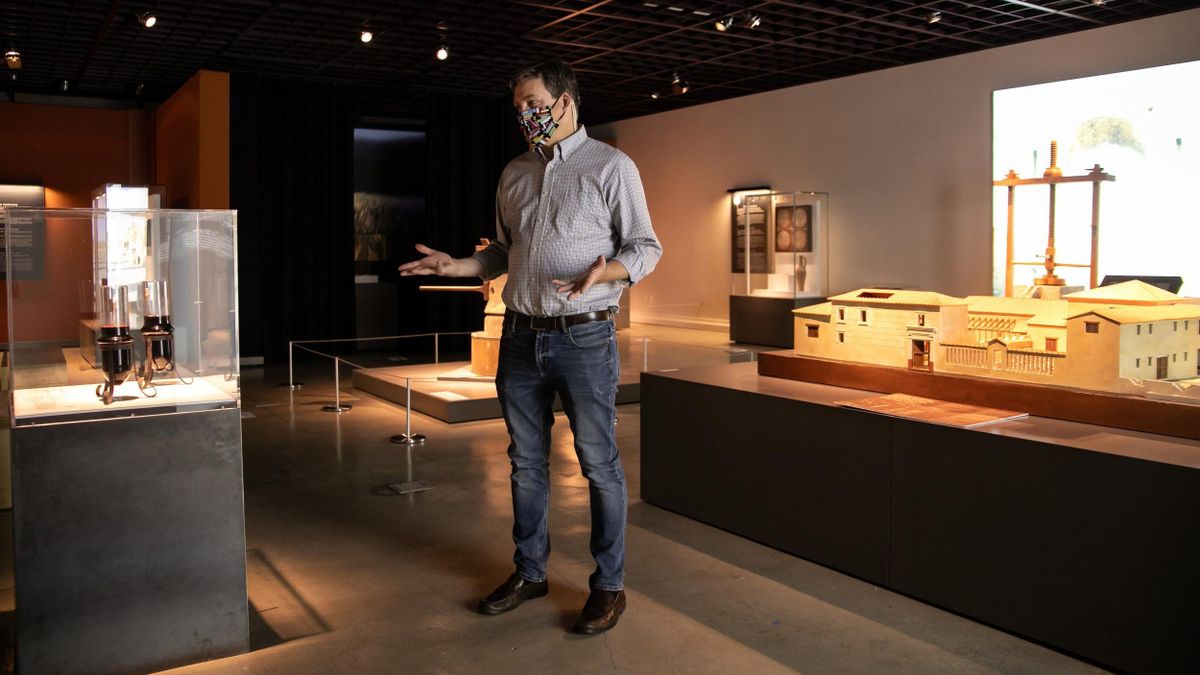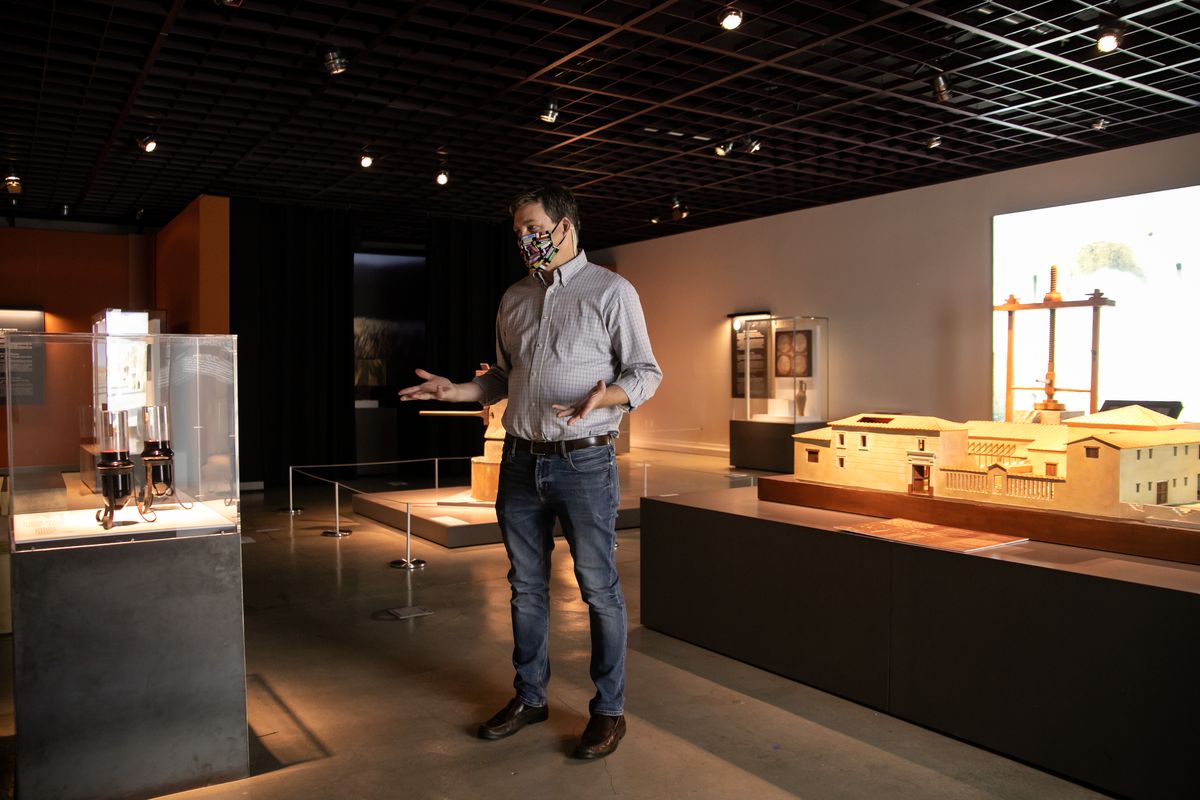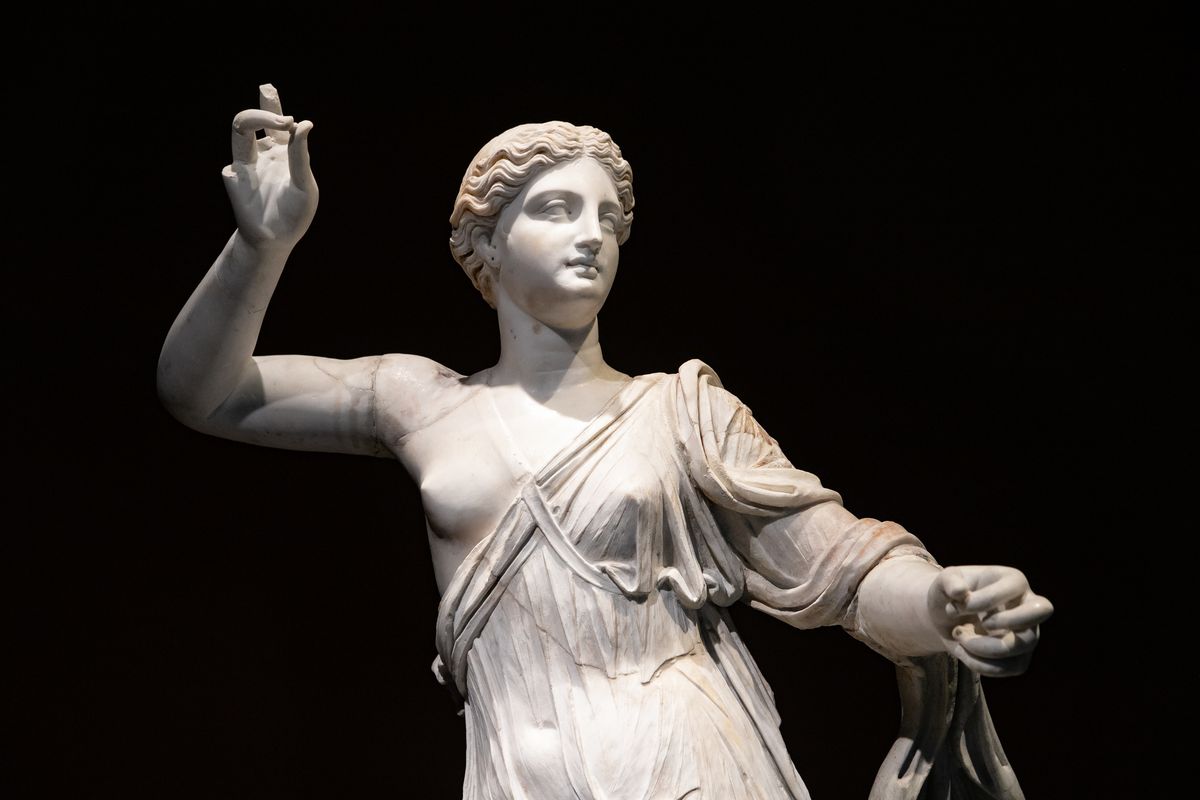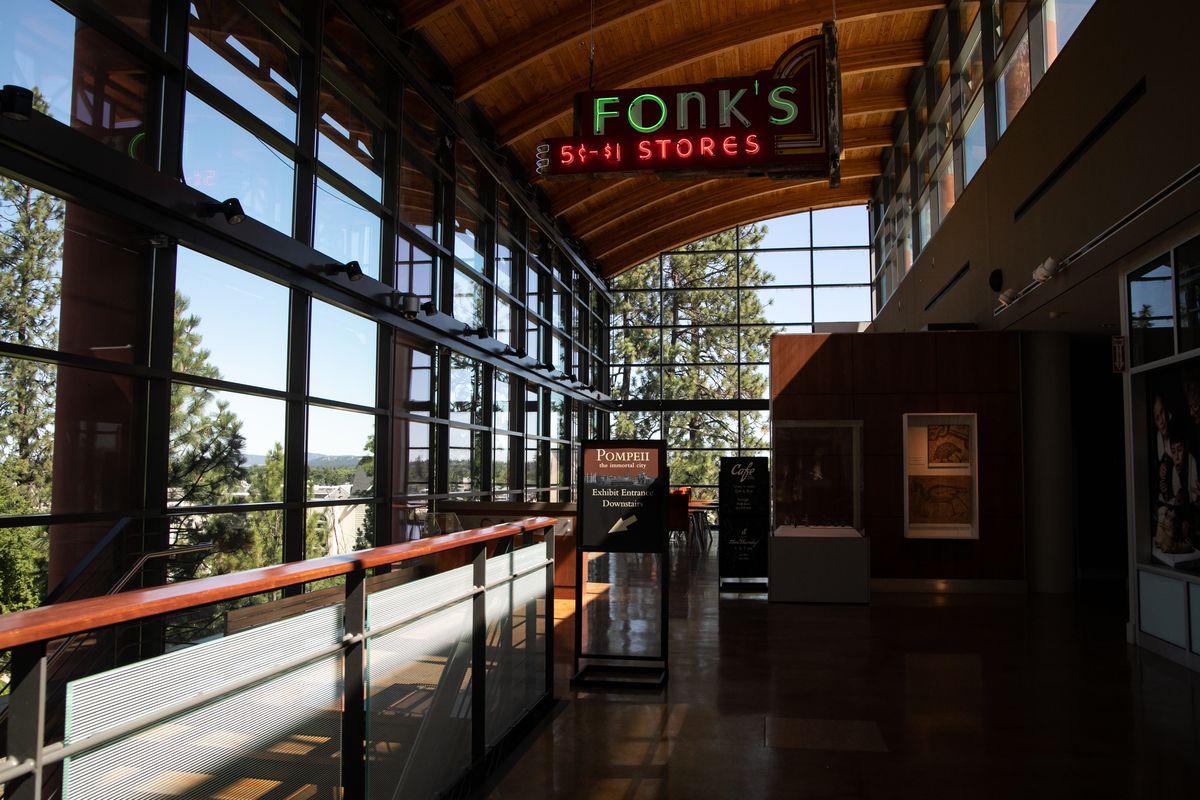Spokane’s Museum of Arts and Culture looks inward during shutdown
Wes Jessup, executive director of the Northwest Museum of Arts and Culture, walks through "Pompeii: The Immortal City" exhibit at the empty museum while it is closed due to coronavirus on July 13, 2020. The museum shut down in late March and won't open until Phase 3, but still has its biggest-ever exhibit on display because the curators could not return to Spokane from Italy for the scheduled conclusion of the exhibit in May. The MAC also had to reschedule an upcoming American Impressionism exhibit, canceled its biggest fundraiser of the year and only has a handful of active employees now to maintain the museum. (Libby Kamrowski/The Spokesman-Review)Buy a print of this photo
For 1,500 years, the artifacts of everyday life in Pompeii were lost under ash and rock. Now, they’re languishing out of sight once more.
In partnership with curators from Italy’s national museum in Naples, Spokane’s Northwest Museum of Arts and Culture brought treasures and recreations of daily life from the ancient city to the Inland Northwest. The exhibit – featuring casts of bodies frozen in ash, statues nearly intact despite the volcanic eruption that destroyed Pompeii in A.D. 79 and a loaf of bread preserved – was shaping up to be one of the MAC’s most popular exhibitions .
“Those few weeks in February when the show was just opening up, those were some of our biggest weeks we’ve ever seen,” said Wes Jessup, the museum’s executive director. “Then, suddenly, no one at all was here, and they haven’t been here since.”
white marble statue of Diana on July 13 at the Northwest Museum of Arts and Culture. The museum shut down in late March but has its biggest exhibit, “Pompeii: The Immortal City,” on display because the curators could not return from Italy for the scheduled conclusion of the exhibit in May. (Libby Kamrowski/The Spokesman-Review)Buy a print of this photo
The MAC has been closed down completely since March, when Washington’s stay-home order went into effect and shuttered most nonessential businesses. Many of those businesses have been able to reopen, at least to some extent. But the museum’s exhibits still remain unlit and unseen.
Under the state’s Safe Start plan, places like the MAC can’t open until Phase 3 . With Spokane County in Phase 2 and cases of COVID-19 increasing daily, Jessup said the museum has been turning inward.
When the museum shut down in March, Jessup said staff who would typically tend the admissions counter or guide groups switched to digitizing archives instead. That project had long been put off while staff members were busy with other things, so the slow time helped them make huge strides in archiving over 19,000 pieces of their collection, Jessup said.
Staff also undertook a massive, “extremely deep” cleaning of the entire museum, sanitizing all the nooks and crannies in each gallery.
Side projects eventually ran out, though, and the MAC found itself reckoning with a budget shortfall. The museum receives some state funding, but that only accounts for about half the budget, Jessup said. The rest is largely generated by ticket sales, purchases at the museum’s cafe and gift shop, and facilities rentals, all of which dried up during the pandemic.
Jessup said they continued to get some online orders through the gift shop, and the Art Source rental and sales program has remained relatively stable throughout the shutdown. But those only amount to the museum being about “one-eighth open,” Jessup said.
To cope with the losses, the MAC laid off seven of its roughly 40 staff members at the end of May, and cut hours for three others. Jessup said he was proud to go without layoffs for so long, but ultimately there was no other option.
The MAC has always thrived on the support of community members who didn’t back down in the face of a changing financial outlook, Jessup said. Earlier in the shutdown, board members put together an appeal for donations to the museum, to be matched up to $25,000. Donors surpassed that goal by almost double, bringing the total to over $77,000, Jessup said.
“Even though our finances are tight right now, I believe that we can emerge on the other side of this as an organization that weathered the storm while deepening our connection to the community,” Jessup said. “I’m optimistic. This won’t end the MAC.”
Despite the downturn, the museum has found ways to carry on its mission of educating and entertaining Spokane virtually. A lecture series planned in conjunction with the Pompeii exhibit quickly pivoted to a webinar instead, and over 400 people tuned in, Jessup said. A series of videos posted to social media details behind-the-scenes operations while the museum’s closed down, which Jessup said have been unexpectedly popular. And the MAC’s popular summer camp programs for kids have gone virtual, too – simply pick up an activity kit from the museum, and the rest of the learning and play can be done online, Jessup said.
Once the MAC reopens, Jessup said restrictions on travel and tighter budgets will make big traveling exhibitions, like the Pompeii show, much harder to bring to Spokane. Staff started digging through the MAC’s collection, trying to find relics either forgotten or never before seen by the public.
“How can we leverage what resources we already have? ” Jessup said. “How can we bring people out to see things interesting and relevant to their local area, but that aren’t huge blockbusters like Pompeii?”
Jessup said he’d hoped to focus more of the MAC’s displays on local art and culture since taking over as director three years ago, but admitted it’s often easier when a truck rolls in from elsewhere with everything he needs to put on a great show.
A global shutdown merely helped accelerate the transition.
“We want to show what the Inland Northwest brings to the table,” Jessup said. “We’re the only big museum within 200 miles, and it’s time we step up and highlight and elevate our regional artists.”
Some of the exhibit ideas in the works include one planned for this fall that will mark the 75th anniversary of World War II’s end, using artifacts and memories from Inland Northwest residents who went off to fight or manned the home front. Jessup hopes to spark interest in the museum’s extensive collection of artifacts from the region’s Native American tribes with new exhibits, including one featuring craftsmen from the Spokane and Coeur d’Alene tribes hand-carving a traditional canoe over the span of several weeks.
The big-ticket traveling exhibitions won’t go away completely, though. A pop art exhibit is planned for October, featuring the familiar and instantly recognizable work of artists such as Andy Warhol and Keith Haring.
And he hopes it won’t be too late to see “Pompeii: The Immortal City.” The exhibit is sticking around at least until September. It was scheduled to leave in May, but the Italian curators were unable to fly over to pick it up. That was a blessing in disguise, because Jessup hopes Pompeii’s popularity could help the MAC bounce back in a big way.
The Campbell House, a historic home built in 1898 that sits on the museum’s campus in Browne’s Addition, likely won’t reopen at all until the pandemic “blows over somewhat,” Jessup said, because its cramped hallways and cozy rooms make social distancing practically impossible for tour groups.
He is eagerly anticipating the day the museum can open its doors to visitors again, though of course capacity will be limited and masks required at all times.
He said the MAC is hoping to transition some of its events outside upon reopening to keep groups as safe as possible, using the museum’s 5-acre campus that features an outdoor amphitheater and a wide-open plaza.
“Once we are back open, this will be one of the safest places you can possibly go during a pandemic,” Jessup said.






















